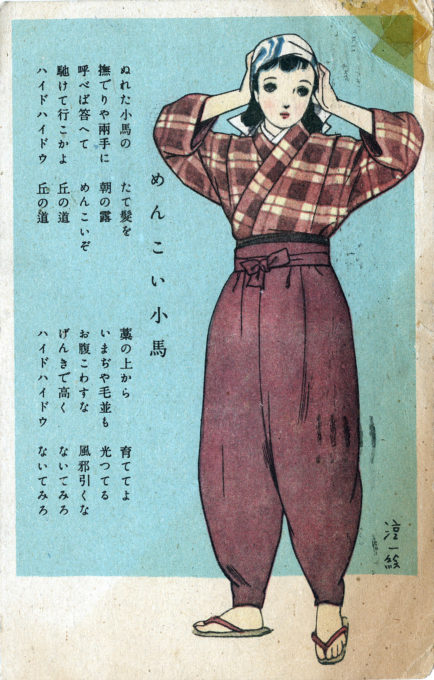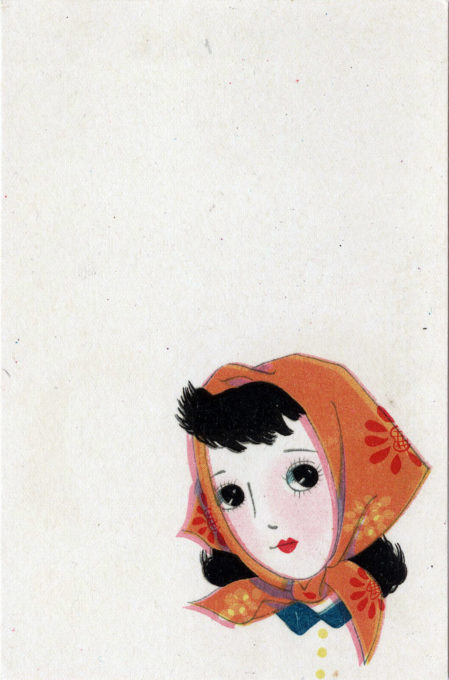“A traditional pair of monpe [also mompei] is recognised by having a loose waistband and a drawstring hem around each ankle.
“The garment is historically thought to have descended from the traditional court trousers, hakama, because of the loose shape of the trouser leg and how the piece of clothing was designed to also be worn over kimono.
“… Monpe was popularized as an informal uniform in Japan during the 1930s and 1940s, during the East Asia and Pacific wars, because it utilized existing materials within the home and could be easily altered and repaired, a necessity in wartime. It was subsequently transformed into a symbol of Japan’s wartime deprivation. It was also criticized for its unfeminine qualities, in comparison to traditional kimono or Western-style clothing (yōfuku), deemed ‘too frivolous’ in wartime.
“At the outbreak of the Second Sino-Japanese War (1937), monpe were quick to proliferate across work and school environments. During the Pacific War, monpe were almost enforced as part of government-regulated ‘Standard Dress’ for women.
“Popular magazines published articles demonstrating how women could make monpe out of their old kimono, and girls magazines such as Shõjo kurabu used monpe as a symbol of the home front. Monpe workshops were sponsored in schools by the Home Ministry to encourage female students to sew their own clothes.”
– Wikipedia

A lyrics postcard to a song titled “Adorable Pony” [Menkoi kouma], c. 1940, illustrated by Nakahara Jun’ichi. A young girl models monpe (also mompei), the very plain, loose-fitting work-trouser that came to symbolize wartime austerity in Japan from 1937-1945. The word menkoi [from the song title, trans. “cute, adorable, darling”] is used primarily in the Tohoku and Hokkaido regions, in place of the Kansai-Kanto dialect kawaii.
See also:
Nakahara Jun’ichi fashion illustrations, c. 1945-1948.
Changing fashion (school uniform), c. 1920.
Changing fashion (Western dress), c. 1910.
“[T]he Japanese state’s wartime expectations of girls mirrored those placed on adult women. Girls, like women, were expected to support the war effort and give comfort and care in the form of home-front activities to all Japan’s imperial soldiers, regardless of class or regional background. But the wartime girl, straddling expectations of both women and children during this time, went through growing pains in terms of her image.
“… With her blunt anti-hairdo and her earthy, sturdy body, the wartime girls in girls’ magazines were a world apart from the decorative, dreamy schoolgirls of the late Meiji/Taisho periods.
“Indeed, the schoolgirl uniforms that had prevailed alongside colorful kimono and ribbons in the earlier period disappeared, and in their place two types of outfits – physical education clothes and the monpe, the baggy, form-hiding pants that have since come to symbolize wartime women for many Japanese (and wartime drudgery for many Japanese women) – became the new uniform for girls in girls’ magazines.
“From about 1940 onward, even when in school, shoujo [a young maiden] were most commonly seen wearing monpe rather than skirts.”
– “War on the Domestic Front: Changing Ideals of Girlhood in Girls’ Magazines, 1937-45”, by Catherine Bae, U.S.-Japan Women’s Journal, No. 42, 2012


